A World Exposed Volume 2: The (humming)birds and the bees
By Tara McIntire
Here we are, over six months of sheltering in place and my birding has forever been changed. First, it was adjusted to include jumping spiders, but now I’ve found another new world and focus.
Don’t worry, I’m still always looking for birds, and thankfully there seems to be a fairly consistent brigade of hummingbirds with sounds of wing-whirs and chirps, as they zoom about the yard feeding on various plants and at my feeder. Always a fan favorite, these fierce and thoroughly entertaining avian acrobats are territorial wings of terror. In this small yard, sometimes you have to actually get out of their way! Thank goodness they are small!

Between seemingly endless Zoom meetings, I have continued to skulk around my tiny yard, camera in hand. One day, I heard a sound that made me look for the hummingbirds, but soon realized it was emanating from the blooming purple basil that I found covered with bees! The shutter clicking began and the images I captured revealed yet another amazing world.
As with so many infatuations and love affairs, it started with they eyes. My first few macro images exposed these remarkable honeybee eyes. They looked ‘hairy’ and with a little ‘googling’ revealed, honeybees indeed have hairs on the largest two of their five eyes (yes, you read that correctly) and it is believed these hairs aid in navigating windy conditions. It gives new meaning to the term ‘hairy eyeball’!
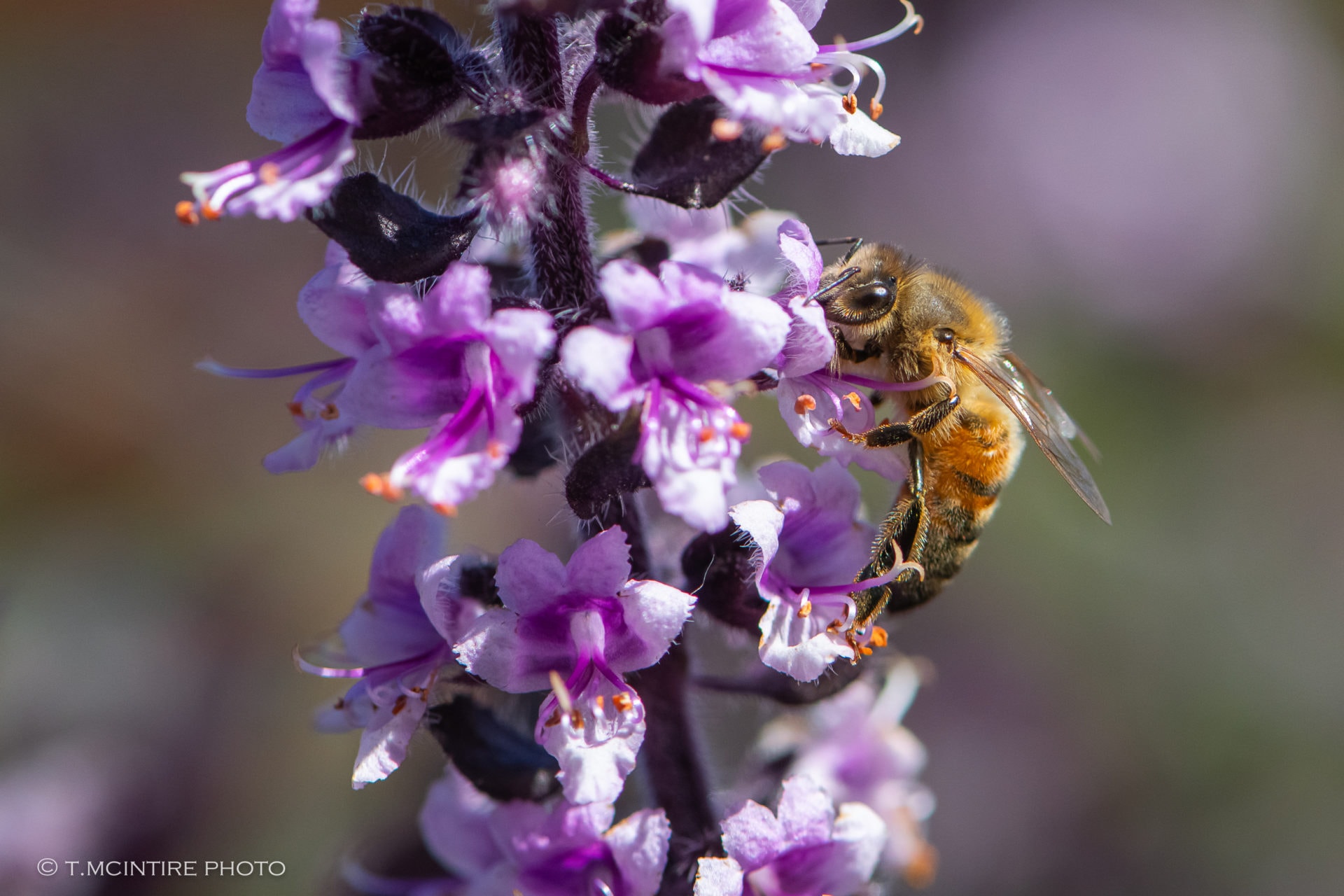
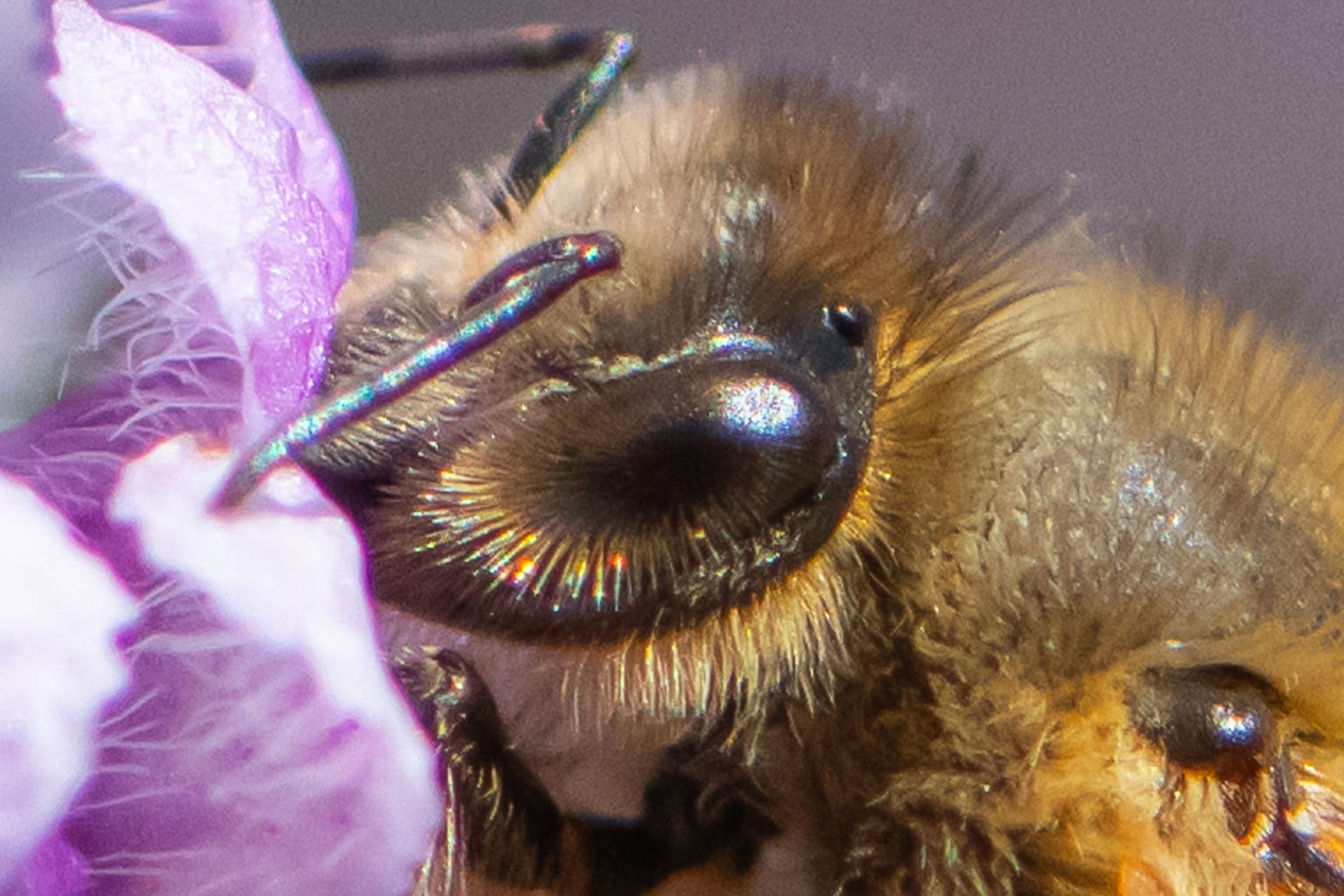
I spent the next few days during ‘micro-breaks’ with my camera (who really needs a bio-break or food?) taking an even closer look at these prolific pollinators when I realized there wasn’t just one ‘type’ of bee. What we know as the common and familiar honeybee is actually an introduced species of European honeybee (Apis mellifera) and one of approximately 90 identified species of bees found in the Bay Area. Who knew? I most definitely did not. Utilizing iNaturalist (a fantastic tool for identification and listing), I have been able to recognize 10 species in my yard, so far. Of those, I have become quite enamored with one in particular. The Wool Carder bee, which is also an introduced European species, (a topic for another time), stood out not only in its physical make-up, but also because of its behavior.


Similar to the very territorial Anna’s hummingbird, this particular bee, which I named Brutus (I am absolutely anthropomorphizing it), literally patrolled the purple basil all day! Brutus (a male based on size, physical characteristics, and behavior) would maneuver about the basil, body-slamming any bee that dared to enter his domain.
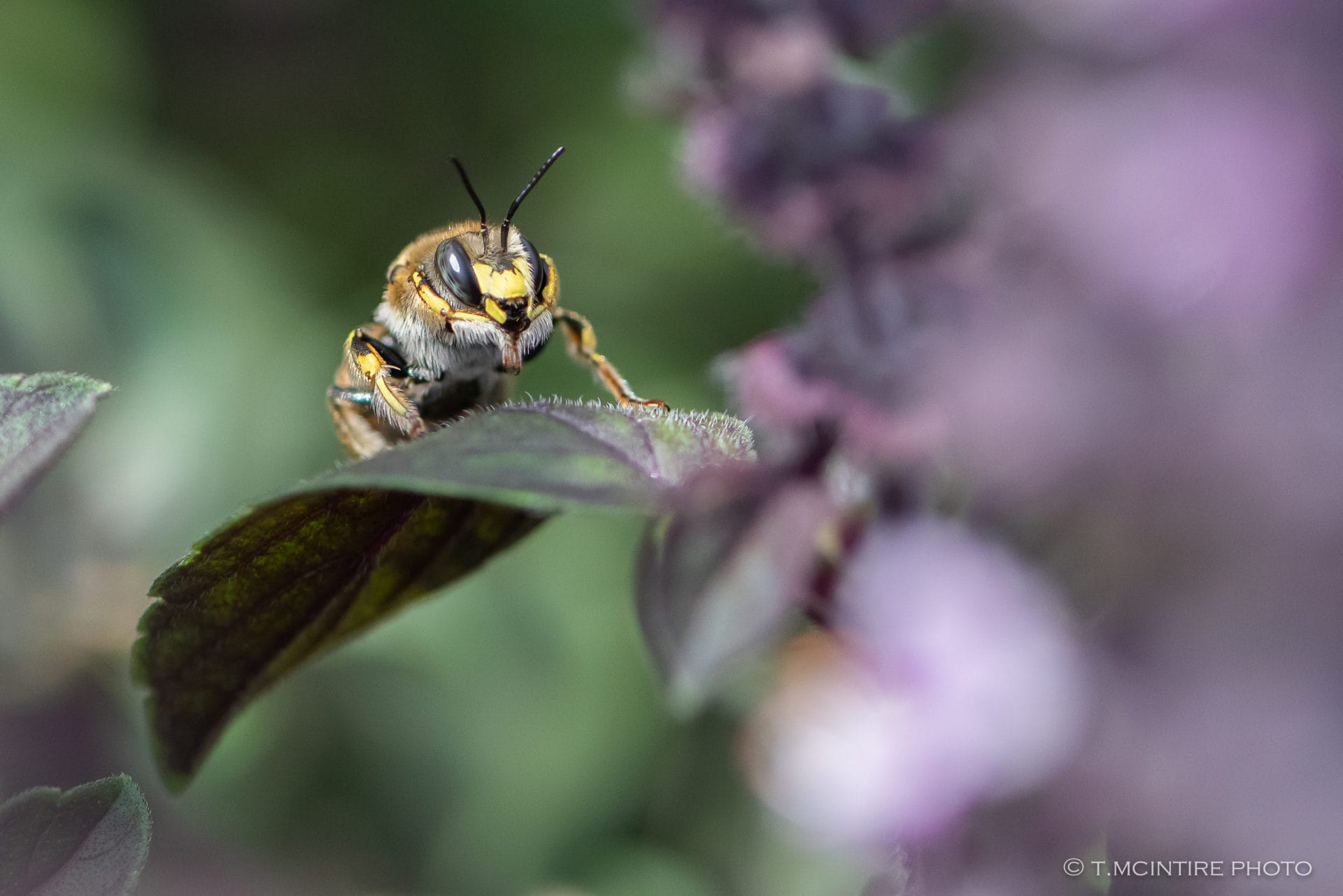
I could see him stop, turn, and then dart straight at a honeybee, knocking it with gusto from the flower. It didn’t seem to physically hurt the bees (though if this happened to a human, they’d have a serious case of whiplash), as it was very quick and the bees seemed to fly off after the stealth strike. I wonder if the bees are taking their tactical cues from the hummingbirds or vice versa?
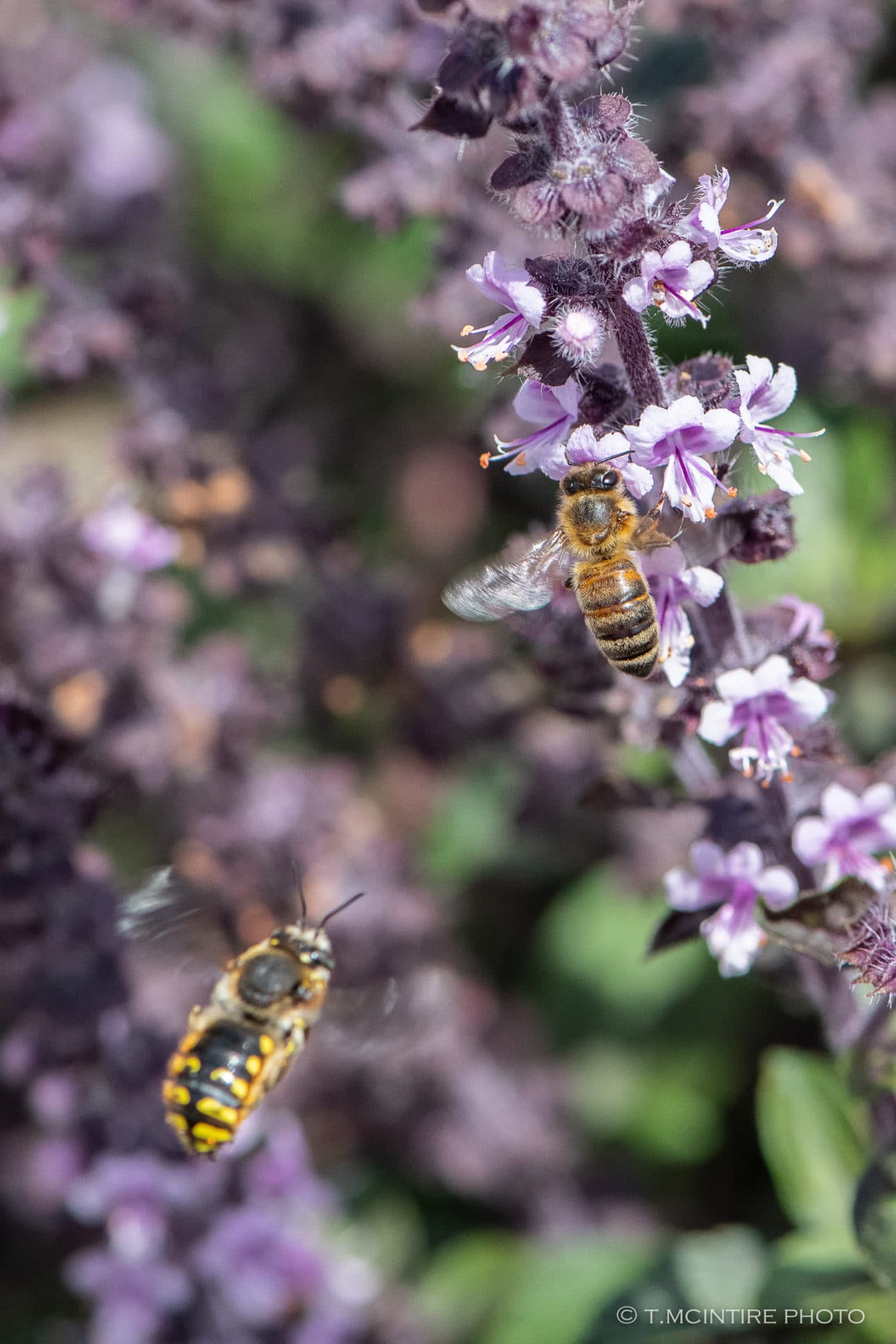


One day, I noticed Brutus didn’t knock one particular bee away; instead he grasped it from behind and stayed there for several seconds. Once I looked at the photos I realized he had another Wool Carder bee in his clutches (a reminder why cameras are excellent tools)! There were now two wool carder bees zooming about the basil. The smaller bee never seemed to be the aggressor and also didn’t bother the honeybees, only Brutus. I witnessed this behavior many more times and learned, not surprisingly, it was a likely a ‘birds and the bees’ moment!
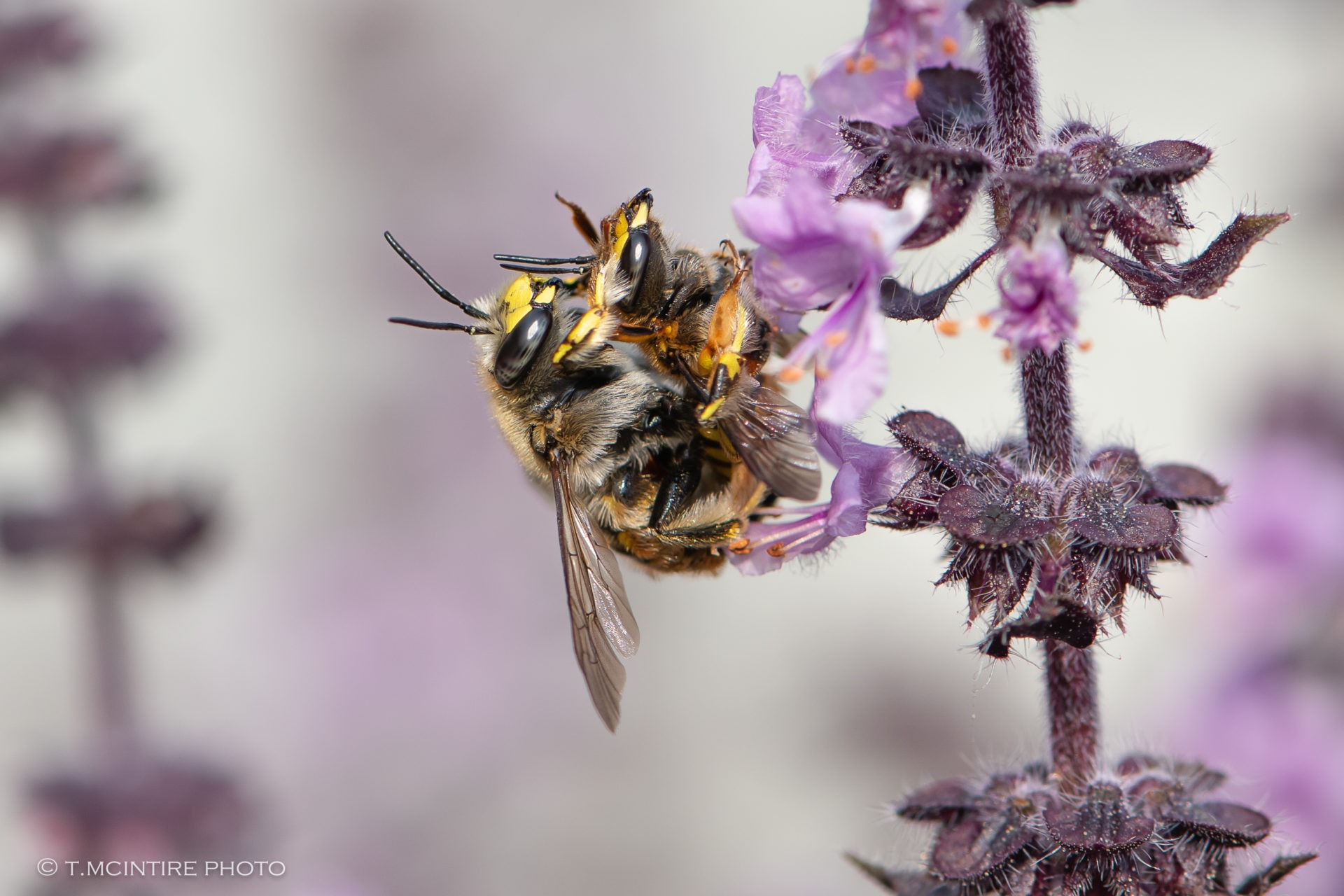
This experience not only revealed new species and knowledge, but also how much can be learned with patience and time, which is something this pandemic continues to reinforce in so many ways. Most importantly it has amplified the critical role of birds, bees, and the multitude of other pollinators, which are essential to the success of our ecosystem and the health of our food web. Climate change, pesticides, non-native plants and animals, loss of habitat, and many other impactful human activities put them at risk each and every day. There is much more to understand than just the birds and the bees.
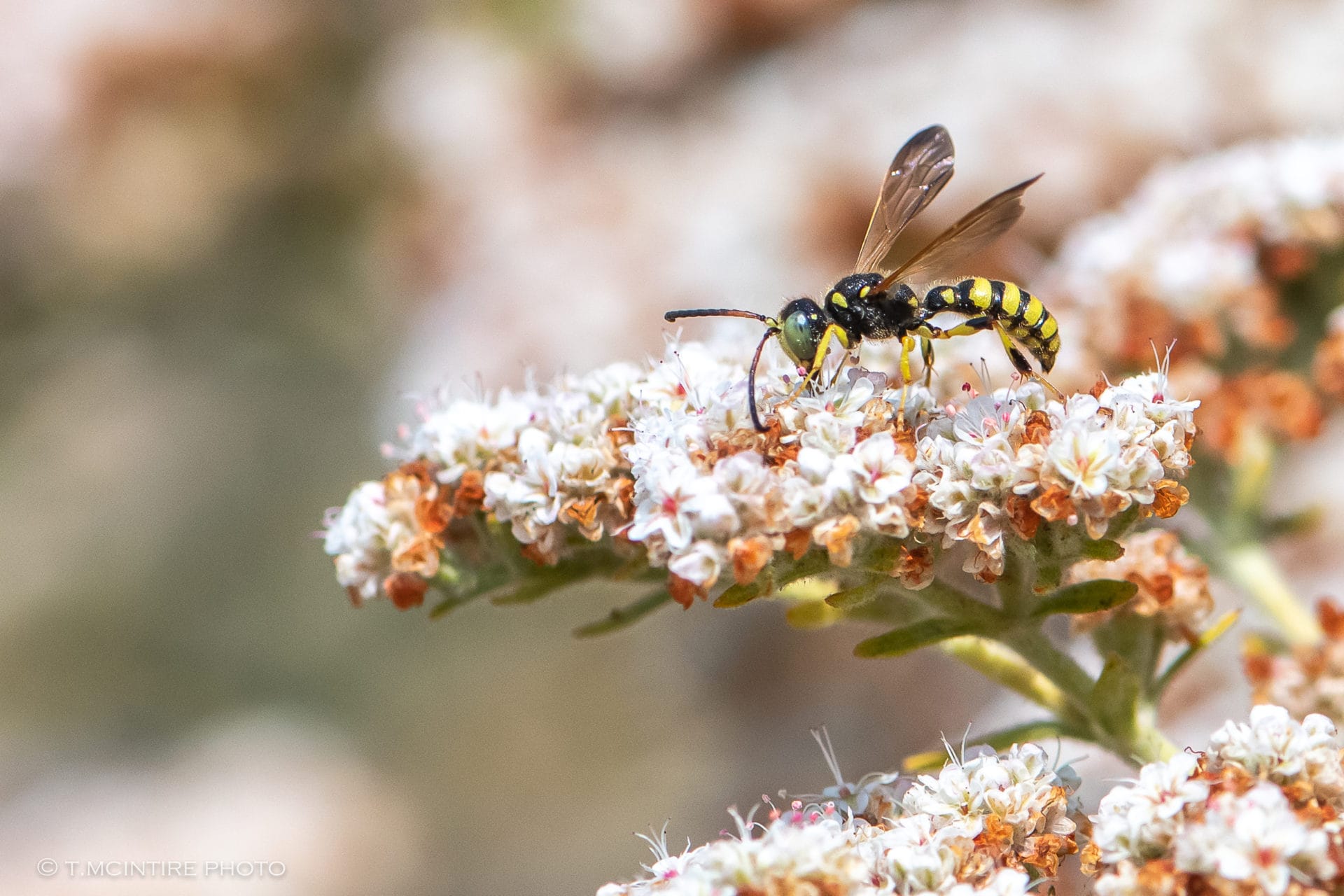
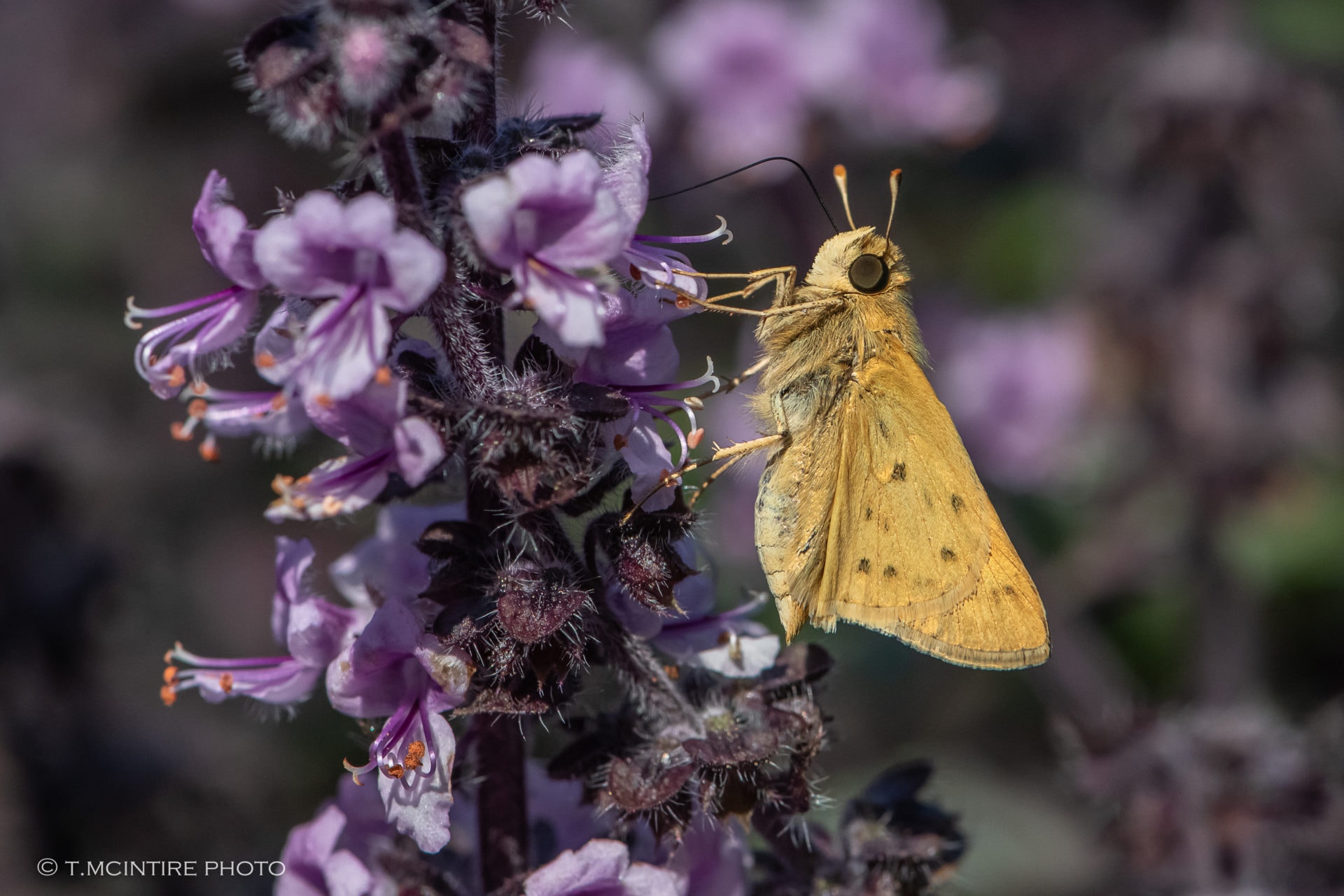

A few tips to help protect and support our pollinators: choose natives when possible; don’t use pesticides; source plants that have not been treated with neonictenoids; provide a clean water source (great for birds and bees!); point your binoculars at more than birds; and most importantly, never stop learning.
About Tara: Tara McIntire is a local birder, GGBA member, Master Birding graduate, Denise Wight ‘Birding By Ear’ disciple, and had just led her first bird walk for the SF Bay Feminist Bird Club before the shelter in place. She is also an avid amateur wildlife photographer who actively promotes and practices ethical and conservation photography. All photographs are taken by the author © Tara McIntire (T.McIntire Photo). She invites you to follow her on Instagram @TMcIntirephoto.
